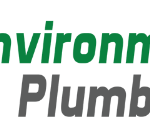Environmental Plumbing: Transforming Water Management for a Sustainable Future
In an era marked by growing environmental concerns, the role of plumbing has evolved beyond its conventional functions. Today, it stands as a crucial component of sustainability efforts, fostering responsible water usage, conservation, and environmental protection. This paradigm shift has given rise to the concept of “Environmental Plumbing,” a pioneering approach that seeks to harmonize modern plumbing practices with our planet’s wellbeing.
Defining Environmental Plumbing
Environmental Plumbing is a holistic approach to plumbing systems that prioritizes ecological responsibility. It encompasses a wide range of techniques, technologies, and principles designed to minimize water wastage, reduce energy consumption, and mitigate the environmental impact of plumbing systems.
Key Principles of Environmental Plumbing
- Water Efficiency: At the heart of environmental plumbing is the quest for water efficiency. By employing low-flow fixtures, dual-flush toilets, and smart water management systems, environmental plumbing strives to optimize water use in both residential and commercial settings. This not only conserves water resources but also lowers utility bills.
- Sustainable Materials: Environmental plumbers prioritize the use of sustainable materials like recycled or reclaimed pipes and fixtures. This reduces the demand for virgin resources and minimizes the carbon footprint associated with plumbing installations.
- Waste Reduction: The proper disposal of wastewater is a critical aspect of environmental plumbing. Innovative sewage treatment systems, such as greywater recycling and composting toilets, help reduce the strain on municipal sewage systems and enhance water quality.
- Energy Efficiency: Environmental plumbing goes hand-in-hand with energy efficiency. By incorporating energy-efficient water heaters, insulation, and pump systems, these practices minimize energy consumption, reducing greenhouse gas emissions associated with water heating and distribution.
- Maintenance and Repairs: Regular maintenance and prompt repairs are key to preventing water leaks and wastage. Environmental plumbers promote proactive measures to identify and fix issues promptly, preventing long-term damage and resource waste.
- Education and Advocacy: Environmental plumbers play an essential role in educating clients and the public about sustainable plumbing practices. They advocate for eco-friendly plumbing solutions and help individuals make informed choices about their plumbing systems.
The Impact of Environmental Plumbing
The adoption of environmental plumbing practices has far-reaching benefits for both individuals and the planet:
- Resource Conservation: Reduced water usage and sustainable materials contribute to the preservation of precious natural resources.
- Cost Savings: Water and energy-efficient plumbing systems lead to lower utility bills, making it a financially sound choice for consumers.
- Environmental Protection: By minimizing water wastage and energy consumption, environmental plumbing helps reduce carbon emissions and supports the fight against climate change.
- Water Quality: Sustainable wastewater treatment methods enhance water quality and protect aquatic ecosystems.
- Resilience: Environmentally friendly plumbing systems are more resilient to changing environmental conditions, ensuring long-term functionality.
Conclusion
Environmental Plumbing represents a fundamental shift in the way we approach plumbing systems. It not only addresses immediate needs for water efficiency and waste reduction but also aligns with our responsibility to protect the environment and ensure a sustainable future. By embracing the principles of environmental plumbing, we can create a world where plumbing serves as a driving force for positive change, conserving resources and safeguarding our planet for generations to come.


